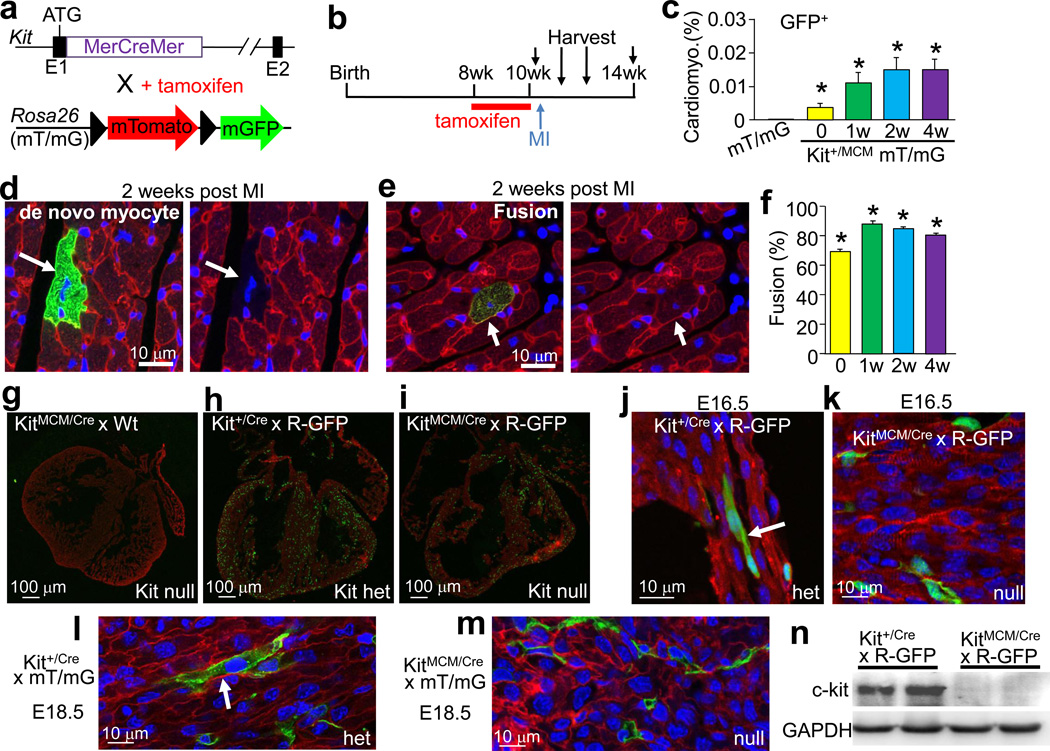Figure 4.
Assessment of fusion versus de novo cardiomyocyte formation in the heart. a, Genetic strategy in which Kit+/MCM mice were crossed with Rosa26 targeted mice containing the membrane targeted tdTomato/eGFP (mT/mG) reporter. b,c,d,e,f, Tamoxifen was given to Kit+MCM × mT/mG mice between 8 and 10 weeks, followed 3 days later by MI injury. c, Quantitation across >50 histological sections of all eGFP+ expressing cardiomyocytes before MI (n=4 hearts) and 1 (n=4 hearts), 2 (n=5 hearts) and 4 (n=3 hearts) weeks after MI injury. Error bars represent s.e.m., *P<0.05 vs mT/mG. d, Example of a c-kit lineage derived de novo cardiomyocyte in which membrane-eGFP (green, left) is expressed and tdTomato fluorescence (red, right) is lost. e, Example of eGFP+ cardiomyocyte (green) that still contains endogenous membrane-tdTomato fluorescence (red), indicating fusion. Nuclei are stained blue. f, Quantitation of fusion percentage. *P<0.05 vs mT/mG. g, h, i, Immunohistological images from embryonic (E) day 16.5 mouse hearts that are either Kit+/Cre × R-GFP (het [h]), KitMCM/Cre × R-GFP (null, [i]) or KitMCM/Cre (null, no reporter, [g]). Red staining is α-actinin and green is eGFP. j, Higher magnification image from h, showing a definitive eGFP+ cardiomyocyte (arrow). k, Higher magnification image from i, which shows only eGFP+ non-myocytes in Kit null hearts. l, m, Histological heart images from E18.5 Kit+/Cre (het) and KitMCM/Cre (null) embryos containing the mT/mG reporter, again only the heterozygotes show examples of eGFP+ cardiomyocytes (arrow). n, Western blot showing loss of c-kit protein in KitMCM/Cre embryos (nulls) versus heterozygous controls.

